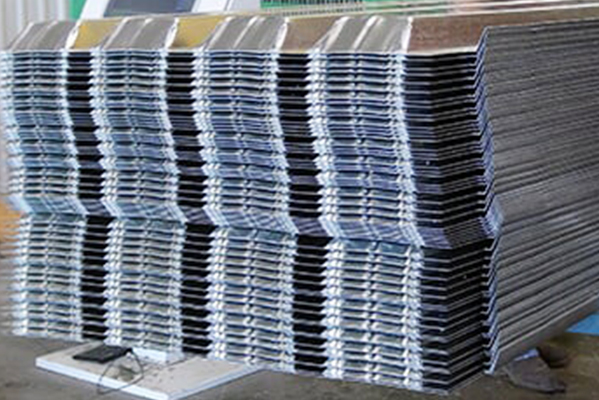Navigation Menu
Contact Us
- Email:
- info@wxavatar.com
- Address:
- Yurong Village, Yuqi Street, Huishan District, Wuxi, China.
Release Date:May 31, 2025 Visit:43 Source:Roll Forming Machine Factory
In today's competitive manufacturing landscape, maximizing factory floor space is a priority for many businesses. One solution that has gained attention is the panel line stacker—a specialized material handling system designed to store and organize panels, sheets, or other flat materials vertically. But are these systems truly effective in optimizing space? This article explores the benefits, considerations, and potential applications of panel line stackers in industrial settings.

The Challenge of Factory Floor Space
Manufacturing facilities often face space constraints, particularly when dealing with large, flat materials such as metal sheets, wood panels, or plastic components. Traditional horizontal storage methods can consume valuable floor space, limiting workflow efficiency. As production demands increase, finding ways to store materials without expanding facility footprints becomes crucial.
How Panel Line Stackers Work
Panel line stackers are automated or semi-automated systems that store materials vertically, utilizing height rather than floor area. These systems can be integrated into production lines, allowing for seamless material retrieval and placement. Key features include:
Vertical Storage: Materials are stacked in layers, reducing the need for wide storage areas.
Automated Handling: Some models include robotic arms or conveyor systems for efficient loading and unloading.
Customizable Configurations: Stackers can be adjusted to accommodate different panel sizes and weights.
Benefits of Panel Line Stackers
Space Efficiency
By utilizing vertical space, panel line stackers help free up floor area for other operations, improving overall facility layout.
Improved Workflow
Automated retrieval systems minimize manual handling, reducing downtime and increasing productivity.
Material Protection
Stackers keep panels organized and secure, reducing the risk of damage from improper storage.
Scalability
As production needs grow, additional stackers can be integrated without requiring significant floor space expansion.
Considerations Before Implementation
While panel line stackers offer advantages, businesses should assess several factors before adoption:
Initial Investment: High-quality stackers may require a significant upfront cost.
Maintenance Requirements: Automated systems need regular servicing to ensure smooth operation.
Compatibility: The stacker must align with existing production equipment and material specifications.
Applications in Different Industries
Panel line stackers are versatile and can be used in various sectors, including:
Metal Fabrication: Storing sheet metal for cutting and forming processes.
Woodworking: Organizing plywood, MDF, or other panel materials.
Plastics Manufacturing: Managing large plastic sheets before thermoforming or CNC machining.
Conclusion
Panel line stackers present a viable solution for manufacturers looking to optimize floor space while maintaining efficient material handling. By leveraging vertical storage and automation, these systems can enhance workflow, protect materials, and support scalable operations. However, businesses should carefully evaluate costs, maintenance, and compatibility to determine if panel line stackers are the right fit for their needs.
For facilities struggling with space limitations, investing in a well-designed stacker system could be a strategic move toward greater operational efficiency.